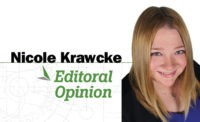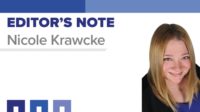It’s been more than two years since I took over PM Engineer from my predecessor. What a wild and crazy time that was — the COVID-19 pandemic was just getting started and lockdowns were being mandated. Needless to say, I didn’t get out much that year, or even last year, for that matter. But, I’m happy to say that, after two years, I was finally able to attend my first technical event — the Emerging Water Technology Symposium (EWTS), which was held in San Antonio May 10-11.
Co-convened by the Alliance for Water Efficiency (AWE), the American Society of Plumbing Engineers (ASPE), the International Association of Plumbing and Mechanical Officials (IAPMO) and Plumbing Manufacturers International (PMI) in San Antonio, EWTS unveiled solutions for the nation’s most pressing water challenges such as drought, Legionella and other waterborne illnesses, and the quality of the water and sanitation systems in underserved communities.
In his opening remarks, IAPMO Executive Vice President of Advocacy and Research Pete DeMarco pointed to a number of accomplishments for which the EWTS has served as a springboard, including the development of the IAPMO Water Demand Calculator, which updates nearly century-old methods for sizing plumbing systems, and the Water Efficiency and Sanitation Standard (WE•Stand), which water-stressed communities can adopt in addition to their existing plumbing codes to accelerate the use of water recycling technologies.
Keynote speaker Don Johnston, senior operations director for Water.org, delivered his presentation remotely from Jakarta, Indonesia, with a 12-hour time difference. Johnston discussed the global water and sanitation crisis and its impact on low-income areas.
“In about 19 years, we’ve seen water and sanitation access reach more than 45 million people through more than 10 million microloans, with $3.7 billion disbursed to households,” he said.
Additionally, Special Pathogens Laboratory President and Founder Dr. Janet Stout gave her podium presentation on understanding the need, benefits and limitations of applying supplemental disinfection control in plumbing systems. Stout, a self-proclaimed “legionologist” sporting an “End Legionnaire’s disease” pin, earrings and shoes, looked at approaches and products for mitigating the risk of Legionellosis in point-of-use and point-of-entry building water systems.
“There’s a party in your pipes… All the bacteria in your pipes is growing synergistically,” Stout said. “It means other bacteria are helping Legionella to grow. All of this means there may be a greater need for control, disinfection and innovation to control the growth.”
Additionally, she cautioned EWTS attendees to limit exposure to Legionella when staying in hotels. “I always like to tell people what a ‘Legionologist’ does when staying in a hotel, knowing there are increased risks. If there’s a decorative water feature at a hotel bar, you’ll see me there for 10 minutes and no longer because if that water is contaminated with Legionella, there’s a time factor on exposure that’s been noted in outbreaks of decorative water features in hotels. When I go into the hotel room, I flush the fixtures with super-heated water. I recommend that you do the same because, in outbreaks, studies have shown the first person using that fixture in the morning got Legionnaires disease.
One of her key points was that improved water management requires knowledgeable Legionella prevention and water service providers, which can come from certification to ASSE/IAPMO/ANSI 12080 for Legionella Water Safety and Management Personnel.
The event also featured two panel discussions. The first was held on day one and addressed effective risk management of building water systems. Julius Ballanco, president of JB Engineering and Code Consulting; James Dipping, director of plumbing engineering for Environmental Systems Design; Matt Freije, CEO of HC Info; Christoph Lohr, vice president of strategic initiatives for IAPMO; Kurt Steenhoek, international representative for the United Association and Stout all participated in the discussion. Ballanco, Dipping and Lohr are also PM Engineer columnists. Check out Ballanco’s and Lohr’s June columns in this issue. You can read Dipping’s latest column in our May issue.
The second panel discussion on day two featured Ed Osann, senior water policy analyst for the National Resource Defense Council; Dain Hansen, executive vice president of government relations for IAPMO, and Stephanie Salmon, president of Potomac Government Relations and Washington representative for PMI; and yours truly moderating the session on the implications and funding of the Infrastructure Investment and Jobs Act, specifically as it related to the drinking water and wastewater portions of the bill.
The EWTS folks certainly threw me right into the deep end of the pool for my first time attending the event and my first ever technical event! It was sink or swim, and I feel like I did a decent dog paddle. The event was very educational, and it was great to be able to meet so many people in person after working with them for two years.
IAPMO will provide sessions from the EWTS on-demand in the near future. To be notified when they are available, register at www.ewts.org/2022-ewts. I highly recommend all plumbing system designers and engineers look into attending this educational event when it comes back in 2024.




